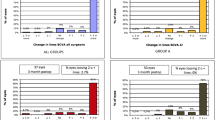Summary
There are estimated to be 20 million people blinded by cataracts, 80–90 % of whom live in rural areas of developing countries where expert surgical resources are scarce. The majority of all cataract operations are still intracapsular extractions (ICCE). Aphakic correction using spectacles is problematical in developing countries. This study was undertaken to evaluate the safety of multiflex open loop anterior chamber intraocular lenses (AC IOLs).
Methods: A total of 2000 people attending Lahan Eye Hospital, South-east Nepal, with bilateral cataract were randomly allocated to receive in their first eye either ICCE with AC IOL (AC IOL group) or ICCE with aphakic correction (control group). All operations were performed by two ophthalmologists using a standardized technology and 4.5 x operating loupe magnification. Functional and best corrected vision was recorded. The primary outcome measure was poor vision after surgery, which was defined as a visual acuity of less than 6/60 at 1 year follow-up (WHO definition for severe visual impairment and blindness).
Findings: The median time needed to perform ICCE was 4.1 min and to perform ICCE with AC IOL 6 min. Of all study patients 91 % were examined after 1 year. Five percent of the AC IOL group and 5.4 % of the control group had a functional visual acuity of less than 6/60. Causes of reduced vision in the AC IOL group versus the control group were: correctable refractive error (22 vs 29), uveitis/secondary glaucoma (13 vs 2), endophthalmitis (4 vs 7), pre-existing eye diseases (4 vs 5), retinal detachment (0 vs 4), and corneal decompensation (0 vs 1). Of the control group, 24 patients were found to be functionally blind in the operated eye (vision < 3/60) because they did not wear their aphakic spectacles. Normal vision (WHO defintion: ≥ 6/18) was achieved best corrected in 89.9 % of the AC IOL group and 93.2 % of the control group. Analysis of additional long-term follow-ups (2–5 years post-operatively) has not yet been completed.
Interpretation: This study provides evidence that in developing countries well-manufactured multiflex open loop AC IOLs can be implanted safely by experienced ophthalmologists after routine ICCE, avoiding the disadvantages of aphakic spectacle correction.
Zusammenfassung
Hintergrund: Die Anzahl der weltweit an Katarakt Erblindeten wird auf 20 Millionen geschätzt. 80–90 % leben in ländlichen Gebieten der Entwicklungsländer, in denen die augenmedizinische Versorgung unzureichend ist. Der weitaus größte Teil aller Kataraktoperationen wird dort immer noch als intrakapsuläre Kataraktoperation (ICCE) durchgeführt. Die anschließend notwendige Starbrillenkorrektur ist besonders in Entwicklungsländern problematisch. Diese Studie wurde durchgeführt, um zu prüfen, wie verträglich und sicher die neuen Multiflex-Vorderkammerlinsen (VKL) sind.
Patienten und Methode: 2000 Patienten mit beidseitiger Katarakt wurden in der Augenklinik Lahan, Süd-Ost-Nepal, nach vorgegebenen Kriterien für die Studie ausgewählt und randomisiert am ersten Auge operiert – entweder ICCE mit Vorderkammerlinse (VKL-Gruppe) oder ICCE mit Starbrillenkorrektur (Kontrollgruppe). Alle Operationen wurden standardisiert von zwei Augenärzten mit 4,5 x Lupenbrille durchgeführt. Bei der einjährigen Nachuntersuchung wurden sowohl der funktionelle als auch der bestkorrigierte Visus bestimmt. Als Richtlinie zur Beurteilung des Ergebnisses galt ein Visus von weniger als 6/60 (WHO-Definition für „severe visual impairment“ und Blindheit).
Ergebnisse: Die durchschnittliche Operationszeit für ICCE betrug 4,1 min, für ICCE mit VKL 6,0 min. Ein Jahr nach der Operation wurden 91 % aller Patienten nachuntersucht. 5,0 % der VKL-Gruppe und 5,4 % der Kontrollgruppe hatten einen funktionellen Visus von weniger als 6/60. Die Gründe dafür waren in der VKL-Gruppe versus Kontrollgruppe: Korrigierbarer Refraktionsfehler (22/29), Uveitis/Sekundärglaukom (13/2), Endophthalmitis (4/7), bereits präoperativ bekannte Augenerkrankungen (4/5), Netzhautablösung (0/4), zystoides Makulaödem (2/0), Hornhautulkus (1/1) und Hornhautdekompensation (0/1). 24 Patienten der Kontrollgruppe hatten ihre Starbrille nicht mehr und waren auf dem operierten Auge funktionell blind (Visus < 3/60). Bestkorrigiert erreichten 89,9 % der VKL-Gruppe und 93,2 % der Kontrollgruppe einen nach WHO-Definition normalen Visus von ≥ 6/18. Langzeitergebnisse (2–5 Jahre postoperativ) werden analysiert und später veröffentlicht.
Schlußfolgerung: Die Ergebnisse der Studie zeigen, daß die neuen Multiflex-VKL sicher sind und von erfahrenen Operateuren in Entwicklungsländern nach einfacher ICCE implantiert werden können. Nachteile der Starbrillenkorrektur können damit vermieden werden.
Similar content being viewed by others
Author information
Authors and Affiliations
Rights and permissions
About this article
Cite this article
Hennig, A., Pradhan, D., Evans, J. et al. Do anterior chamber IOLs have a role in developing countries? Results of a clinical trial in Nepal. Ophthalmologe 95, 504–506 (1998). https://doi.org/10.1007/s003470050306
Published:
Issue Date:
DOI: https://doi.org/10.1007/s003470050306




